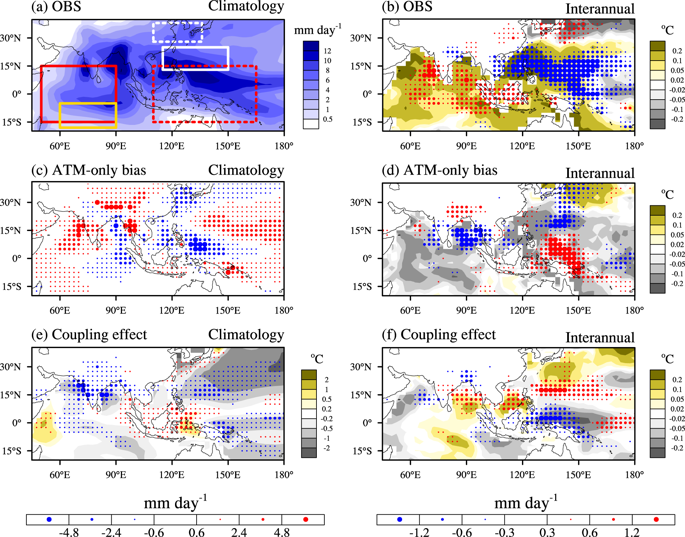npj Climate and Atmospheric Science ( IF 9 ) Pub Date : 2019-11-22 , DOI: 10.1038/s41612-019-0100-x Ben Yang , Yaocun Zhang , Yun Qian , Fengfei Song , L. Ruby Leung , Peili Wu , Zhun Guo , Yixiong Lu , Anning Huang

|
Monsoon precipitation is a dominant driver of floods and droughts over East Asia, which affect billions of people. The lack of air-sea coupling has been blamed for the poor East Asian monsoon precipitation simulations in atmosphere-only models because coupled models generally do better. Based on analysis of simulations from 18 pairs of atmosphere-only and coupled models from the Coupled Model Intercomparison Project phase 5, we show that the improved monsoon precipitation in coupled models is largely due to compensation from sea surface temperature (SST) biases that originate from atmosphere model biases. Such bias compensation is demonstrated using surface energy budgets and a process chain to improve both the climatological mean and interannual precipitation patterns in coupled models. Models with larger atmosphere model errors benefit more from coupling and models with smaller errors benefit less. Hence the key to simultaneously improving the simulations of East Asian monsoon precipitation and SST is a better atmosphere model.
中文翻译:

由于偏差补偿,耦合气候模型中的季风降水更好
季风降水是影响东亚数十亿人口的东亚洪水和干旱的主要驱动力。仅大气模型中的东亚季风降水模拟不佳被归咎于缺乏海气耦合,因为耦合模型通常效果更好。基于对耦合模型比较项目第5阶段的18对大气和耦合模型的模拟分析,我们表明,耦合模型中季风降水的改善主要归因于海平面温度(SST)偏差的补偿,该偏差来自大气模型偏差。使用表面能收支和过程链来证明这种偏差补偿可以改善耦合模型中的气候平均值和年际降水模式。大气模型误差较大的模型受益于耦合,误差较小的模型受益较少。因此,同时改善东亚季风降水和海表温度模拟的关键是一个更好的大气模型。


























 京公网安备 11010802027423号
京公网安备 11010802027423号